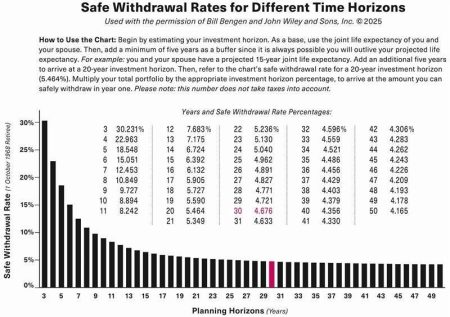Tuck away in President Trump’s new tax law, the One Big Beautiful Bill, is a new program creating “Trump Accounts,” which are tax-deferred investment vehicles for every newborn American citizen born between 2025 and 2028. The program automatically deposits a $1,000 government contribution into each account, which is then invested in a low-cost U.S. stock index fund. Additional private contributions of up to $5,000 annually are permitted from parents or employers, the latter of whom can contribute up to $2,500 tax-free. Funds become accessible at 18 for qualified expenses, with broader withdrawal options phased in over time.
At first glance, this is a pro-savings, pro-investment initiative that aligns with many recommendations from economists. But to determine whether it is a good deal economically, it makes sense to take a step back and analyze this from the economist’s point of view.
Economists tend to emphasize the costs and benefits of programs. This means focusing on how a program changes incentives and behavior on the margin and what good and bad outcomes follow from that. Economists are also concerned about any added risk, because an increase in expected returns can still lower welfare if it loads too much market volatility onto people.
First, as economist Alex Tabarrok points out, the government’s $1,000 contribution per child (applied to approximately 3.5 million newborns annually) implies a direct fiscal cost of over $3 billion per year. This money will likely have to be borrowed. However, while these payments are a cost to the U.S. government, they are a benefit to whomever lends the money at interest. Thus the payments and receipts cancel out in the form of an economic transfer.
So, the $1,000 grant is really just a redistribution from taxpayers and lenders to newborns, which is neutral in terms of efficiency. What’s less neutral, however, are the opportunity costs. When the government borrows, it issues bonds. Investors who buy those bonds are, in turn, not investing that money in other areas of the economy. That’s the heart of the tradeoff.
Will Trump Accounts Boost Investment or Just Shift Money Around?
If this federal borrowing displaces investment in low-yielding vehicles like money market funds or purchases of other governments’ low-yielding bonds, and instead redirects capital into stock market index funds (which generally yield higher average returns), society might be better off. That’s a win for allocative efficiency.
Likewise, if the borrowed money would otherwise have gone toward consumption, or if investors would have just sat on the funds in the form of cash, then shifting overall spending in the direction of more investment is a net positive for the economy.
However, because bonds finance the stock purchases, society is effectively entering a leveraged position on behalf of every child. The leverage may boost expected returns for society, but it also couples newborns’ welfare to market risk that taxpayers may not want to bear.
Moreover, if this borrowing crowds out marginal investments in equities or something similar that provides nearly the same after-tax returns, then the benefit is a wash. In that case, we’re simply redirecting investment through political rather than market channels without gaining much in the process.
Also worth considering is how the investment funds will be used. Just purchasing securities through an index fund doesn’t in itself create any benefits for the economy, since on the other side of these trades is someone selling securities. Thus, additional money floating around in the financial system needs to ultimately find its way into the financing of new companies or expansions of existing businesses if it is to provide a boost to the economy.
In short, there is a lot of uncertainty about whether Trump Accounts will ultimately pass a cost-benefit test. Contrast Trump Accounts with the Trump proposal to create a U.S. sovereign wealth fund. While the latter idea appears to have been sidelined for now, it arguably has a stronger efficiency case, especially if financed by selling underutilized government assets like land. Asset sales are less distortionary than taxes or borrowing, as redirecting dormant capital into productive private use is a clear gain for the economy.
Wealth-Building and Reform of Social Security
Looking ahead, Trump Accounts could serve as a pilot project for bigger reforms. Social Security, as it stands now, operates like a Ponzi scheme. Current workers fund retirees, with no individual account ownership. That model is politically fragile and may be fiscally unsustainable given the demographic changes that lie ahead.
Trump Accounts could be a first step toward a more individualized, investment-based public pension system. At scale, such accounts might not only boost national savings and by extension productivity, but also provide a firmer foundation for old-age security. However, any transition would have to reckon with the “double‑payment” problem. For a time, workers would finance both existing retirees and their own funded accounts.
Additionally, gains will be muted if take‑up proves uneven. For example, if the only people who make tax-advantaged contributions are those who would have saved on behalf of their children anyway, then the government will have spent money subsidizing behavior that would have happened regardless—an expensive way to achieve nothing new.
From a growth standpoint, these funds can serve as seed money for young people to start a business, fund their education, or invest in new skills. This may yield substantial benefits. On the other hand, if the returns get dedicated to travel or other forms of trivial consumption the benefits may be considerably lower.
Trump Accounts won’t transform the economy. But they could boost long-run savings and give more Americans a financial foothold, in which case they may represent a modest yet meaningful nudge in the right direction. In a country plagued by under-saving, the idea deserves to be taken seriously.
Their ultimate success hinges on whether the leveraged risk is worth bearing and whether participation is broad enough such that private saving rises. From an economic perspective, it is not guaranteed their benefits will exceed the costs. But Trump Accounts are promising. If they lead us to think bigger about fixing Social Security or safeguarding American wealth, then they will have served a valuable purpose.
Read the full article here









